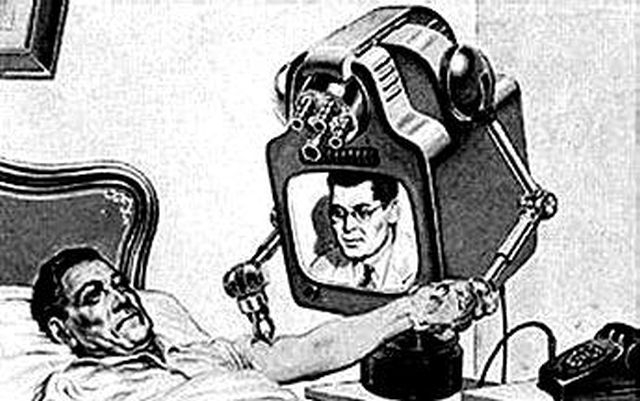Teledoctors: Inexpensive and Easily Accessible Healthcare Solutions
Teledoctors: Inexpensive and Easily Accessible Healthcare Solutions
Blog Article
How Teledoctors Are Revolutionizing Accessibility to Medical Know-how Worldwide
In a period where digital technology permeates every element of life, the world of medical care is undertaking a transformative shift with teledoctors at the leading edge. As they connect the gap between clients and medical specialists across varied geographies, these virtual appointments hold the prospective to redefine typical medical care systems. The effects for underserved and remote communities are especially profound, offering unmatched accessibility to timely medical proficiency. Yet, this advancement raises interesting questions concerning the future landscape of health care distribution, the difficulties that go along with such developments, and the honest considerations that need to be addressed. How will these aspects unfold?
Expanding Reach to Remote Areas
Over the last few years, telemedicine has considerably expanded its scope, breaking down obstacles to healthcare access in remote and underserved areas. This transformative shift has been propelled by improvements in electronic innovation, making it possible for doctor to expand their reach beyond typical geographic constraints. Telemedicine leverages telecoms modern technology to promote examinations, medical diagnoses, and also remote tracking of patients that may or else have limited accessibility to medical care facilities.
Among the main benefits of telemedicine in remote areas is its capability to link the gap between specialists and individuals (teledoctors). In areas where medical care framework is thin, people can now seek advice from a large range of physician without sustaining prolonged travel. This not only saves time and sources but additionally makes sure timely medical treatment, which can be crucial in handling persistent conditions or resolving intense clinical problems
Additionally, telemedicine equips regional doctor by providing methods for partnership with professionals. This enhances the high quality of care delivered at the area degree and advertises a more integrated approach to individual management. By taking advantage of technology, telemedicine is not just broadening clinical gain access to however additionally improving the medical care landscape in remote areas, cultivating a much more comprehensive and equitable system.
Enhancing Individual Ease
Building on the growth into remote areas, telemedicine additionally considerably improves individual comfort, using a seamless medical care experience. By getting rid of the requirement for physical traveling, individuals save both time and resources, especially useful for those with movement concerns or demanding schedules. Telemedicine systems enable clients to consult with doctor from the comfort of their homes, decreasing anxiety connected with traditional in-person check outs.
The versatility of organizing is another substantial advantage. People can book consultations outside normal workplace hours, fitting diverse lifestyles and reducing the need for time off work or college. This adaptability is crucial for preserving routine health care regimens, especially for those managing persistent conditions needing constant monitoring.
Additionally, telemedicine offers immediate access to expert appointments, which typically entail prolonged waiting periods. By attaching clients straight to specialists, it reduces the hold-ups that usually go along with referrals, therefore speeding up diagnosis and treatment initiation. Such timely treatments can bring about much better health and wellness results and person fulfillment.
Personal privacy and confidentiality are kept through protected electronic platforms, ensuring that patients really feel comfy talking about delicate wellness issues. Consequently, telemedicine not only broadens accessibility yet additionally enhances the total patient experience by prioritizing ease and access.

Improving Health Care Effectiveness
Telemedicine is drastically improving health care performance by maximizing and enhancing operations source allocation. By enabling remote assessments, healthcare facilities can lower individual wait times and raise the number of patients seen daily without congestion physical rooms. This shift permits doctor to maximize their schedules and provide more timely treatment, thus boosting client end results.
In addition, telemedicine helps with much better source administration by decreasing the demand for physical infrastructure and reapportioning these resources in the direction of vital locations such as emergency situation services and inpatient treatment. teledoctors. Telemedicine platforms likewise enable seamless combination of digital health records, which boosts communication in between medical care professionals and makes sure that individual information is easily available, additional decreasing delays in therapy
Additionally, telemedicine equips health care specialists to collaborate much more successfully throughout geographical limits, leading to even more comprehensive treatment for individuals. By leveraging technology to connect the gap between suppliers and clients, telemedicine not only enhances the effectiveness of medical care distribution however additionally boosts the quality of treatment that people obtain.
Lowering Medical Care Prices

In addition, telemedicine platforms can decrease the concern on physical health care centers. By managing non-urgent cases from another location, medical care service providers can allocate sources more efficiently, permitting better monitoring of important instances that require in-person focus. This optimized pop over to these guys resource allotment can result in a decline in operational costs, inevitably converting to lower charges for clients.

Promoting Global Medical Partnership
The advent of telemedicine has opened extraordinary avenues for international clinical collaboration, making it possible for health care professionals to attach across borders effortlessly. This technical innovation allows for the seamless exchange of medical expertise, ideal techniques, and cutting-edge treatments, fostering a collaborative atmosphere that goes beyond geographical constraints. Physicians and experts can now speak with peers from various parts of the globe, getting to diverse point of views and expertise that can enhance individual care and results.
Telemedicine platforms provide a virtual room where multidisciplinary groups can convene to discuss complex instances, share diagnostic understandings, and devise extensive treatment strategies. Such collaboration is particularly helpful in attending to unusual conditions and problems that require specialized knowledge not conveniently available in specific areas. By leveraging telemedicine, medical care establishments can create global networks that facilitate constant education and training, making sure that doctor stay updated with the most up to date advancements.
Furthermore, telemedicine improves joint research initiatives, allowing scholastic and clinical scientists to conduct joint research studies and tests without the restraints of physical distance - teledoctors. This global technique speeds up the speed of clinical discovery and the advancement of new treatments, ultimately contributing to a more reliable and interconnected global healthcare system
Final Thought
The surge of teledoctors is changing global medical care by breaking down geographical barriers, thereby increasing access to medical know-how. This technical improvement visit this website improves patient comfort, improves general medical care performance, and contributes to cost decrease. In addition, it cultivates worldwide cooperation amongst doctor, promoting an international exchange of understanding. By guaranteeing equitable accessibility to clinical sources for underserved populaces, teledoctors play a critical function in promoting health equity and improving the high quality of treatment worldwide.
Telemedicine leverages telecommunications technology to help with assessments, diagnoses, and even remote tracking of patients that may otherwise have limited accessibility to healthcare centers.
Structure on the expansion into remote locations, telemedicine additionally substantially improves person comfort, offering a seamless health care experience. By allowing remote Bonuses appointments, medical care facilities can minimize client wait times and raise the number of patients seen daily without overcrowding physical areas.Additionally, telemedicine empowers medical care specialists to team up more successfully throughout geographical borders, leading to more thorough care for patients. By leveraging innovation to link the void in between individuals and suppliers, telemedicine not only increases the efficiency of medical care distribution yet additionally boosts the top quality of treatment that individuals obtain.
Report this page